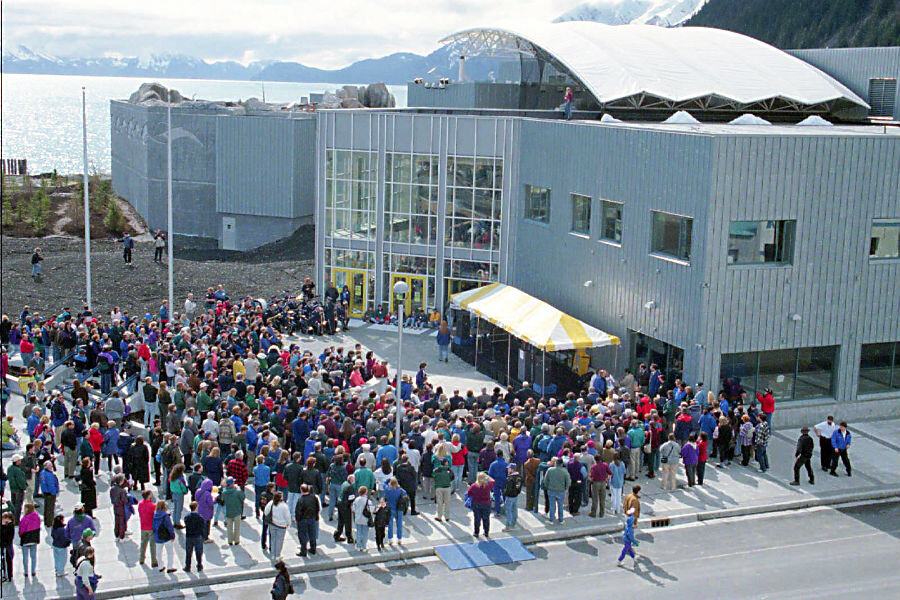Using seawater for heating? Alaska aquarium takes the plunge.
In another sign of the global shift from fossil fuels toward innovative clean energy solutions, an Alaska aquarium has switched to a heating system that runs on seawater.
The Alaska SeaLife Center (ASLC), a public aquarium, research center, and wildlife rehabilitation facility in Seward, Alaska, announced this week that it has successfully transferred 98 percent of its heat supply from fossil fuels to an alternative system that uses ocean water and carbon dioxide (CO2), a shift that the aquarium’s management hopes will lower operational costs and greenhouse gas emissions.
“This project reflects the core mission of the Alaska SeaLife Center ‘to generate and share scientific knowledge to promote understanding and stewardship of Alaska’s marine eco-systems’,” ASLC Special Projects Director Darryl Schaefermeyer said in a release from the center.
“It illustrates the broad and tangible ways in which our day-to-day work can contribute to the long term health and sustainability of the city of Seward, the state of Alaska and the global community,” he said.
The new ASLC system was designed by Andy Baker, owner and project manager of the energy efficiency consulting firm YourCleanEnergy, and draws heat from the waters off nearby Resurrection Bay to warm a mixture of glycol and water. The heated glycol then comes into contact with liquid carbon dioxide, which then boils. The CO2 vapor is compressed to 2,000 psi, well beyond the compound's critical pressure point, causing its temperature to rise. The hot CO2 is then used to heat water, which is pumped into the building's heat loop
“The big news in the final implementation of the system is the use of trans-critical CO2 heat pumps. This is absolutely unique in the field,” Mr. Baker said. “We were delighted to work with the ASLC on this project.”
The ASLC will continue to save money and emissions using the more than $1-million setup; the aquarium estimates tens of thousands of dollars in energy savings annually and a carbon output cut of 1.24 million pounds per year.
“As a mission driven non-profit organization, this project is doubly important,” ASLC president and CEO Tara Reimer said. “We are benefitting the environment and saving money at a time when both are very critical.”
Baker also noted that, while the system has the slight potential to contribute to greenhouse gas output, its use of CO2 while cutting back on the facility’s own carbon footprint makes the technology environmentally sound.
“The fact that you could use the same gas to solve the problem is pretty cool,” he told Alaska Dispatch News.
Baker also says that if the system sticks and costs continue to lower, competition could emerge and lead to widespread use of the technology – though he doesn’t see it happening for a while.
“They're not ready to stick into a home or small business,” Baker told The Associated Press. “They're going to be a little too expensive and too complex. Eventually it will get there.”






